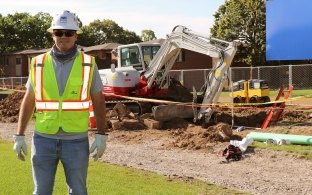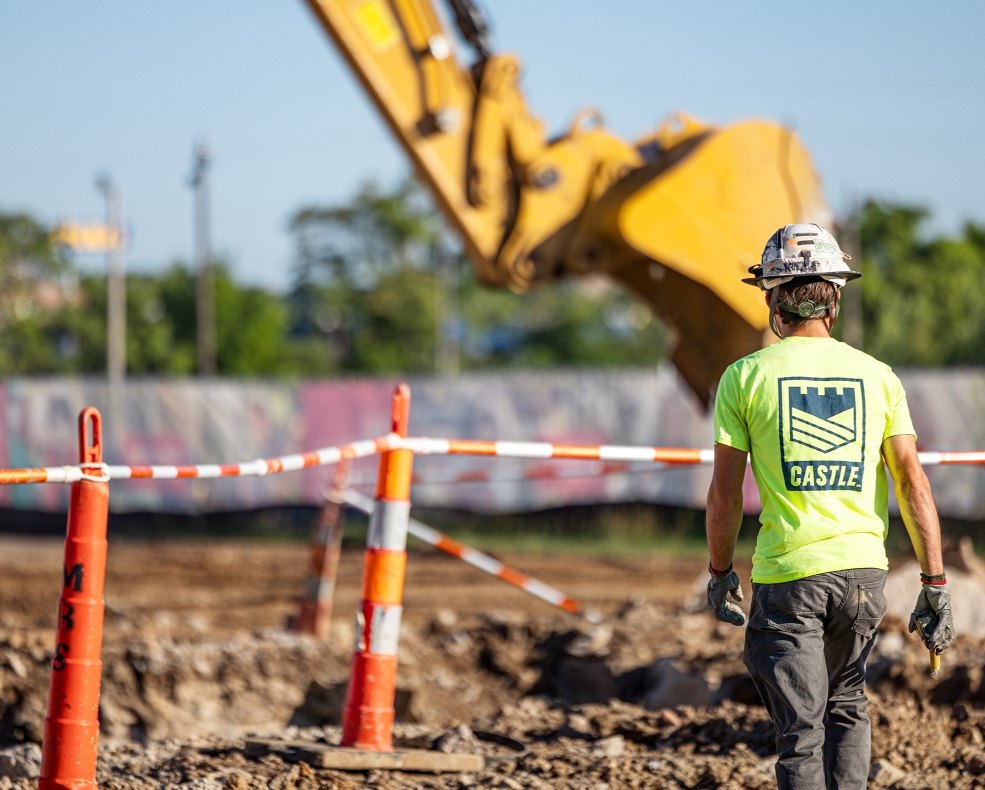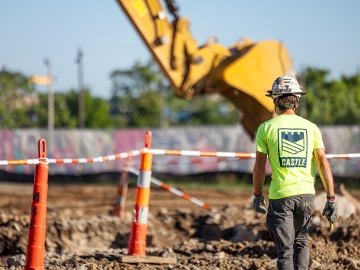How Job Site Safety Reflects on Quality
At Castle Contracting, quality and safety are directly connected.


At Castle Contracting, quality and safety are directly connected. By emphasizing job site safety every day, Castle Contracting instills a company-wide focus on details that leads to fewer on-the-job injuries, more intelligent workflows, less rework and better results for our clients.
How We Meet and Exceed National Construction Safety Guidelines
Like all workplaces, construction job site safety standards are established and enforced by OSHA. This federal agency offers guidance on the most common construction site hazards.
Proactively Addressing Common Construction Site Hazards
With more than 6.5 million workers clocking in daily, the construction industry constantly faces high-risk situations. Not surprisingly, construction workers face an injury risk higher than the national average for all other industries.
At Castle, these are just a few of the hazardous construction site situations we strive to make safer:
Trench and Excavation Safety — For utility and sitework providers, trench and excavation safety is paramount to protect workers from cave-ins. Sloping or benching trench walls, shoring trench walls with supports or shielding trench walls with trench boxes are the most common approaches and should be meticulously planned by the team. Making sure there is always a safe way to enter and exit the trench is required by OSHA.
Falls – Falls from scaffolding and ladders can be deadly and injure more than 24,000 workers annually. Falls often occur due to improper equipment, poor task-specific training or overburdening ladders with weight. That’s why we provide our workers with ladder and scaffolding training, fall prevention equipment like harnesses and why we have dedicated team members to replace worn or damaged equipment immediately.
In addition to sitework, appropriate trench and excavation practices and design are necessary. Utility excavations are smaller but deep, sometimes resulting in serious injury.
Tripping — The often-harsh conditions of a job site contribute to an elevated risk of tripping or slipping. This is more common early in the construction process where Castle plays an outsized role. When workers spend hours in mud and dirt, exposed to the elements, equipment, debris, gravel, cords, wires and cables are all constant dangers.
On-site, Castle team leaders prioritize job site cleanliness to reduce hazards, especially on sloped surfaces and areas surrounding trenches and excavations. In addition to training on carrying equipment safely, we train our craft team to navigate the job site deliberately and avoid distractions.
Impact incidents — Nationally, one in four struck-by-vehicle fatalities involves a construction worker, with 74% of those deaths involving trucks, cranes or other heavy equipment. This statistic also includes fatalities caused by falling objects from cranes and heavy equipment or poorly secured elevated materials such as those that are too close to the edge of an excavation. We require safety helmets and high-visibility vests to improve worker visibility while enforcing safety procedures such as trained signalers and operator protocol that reduce worker exposure to moving vehicles or falling objects.
The Connection Between Quality and Safety in Construction
It is crucial to invest in safety awareness, training and positive reinforcement to make sure our team members go home safely at the end of each day. There are secondary benefits to making safety a part of our daily operations. Safety also contributes to the communication and innovation infrastructure that keeps our organization moving forward.
Communication – Our daily safety and Task Hazard Analysis meetings refocus team members on safety. By constantly pointing out safe and risky behavior, all team members learn to work safely, not quickly. We also believe it’s important to recognize a job well done or when goals and milestones are achieved. Castle implements a Positive Reinforcement Program to acknowledge and reward positive safety behavior and leadership.
Always improving – In addition to pre-planning for individual tasks, we invite real-time feedback to improve our workflows whenever there’s an opportunity to reduce the risk of injury. This makes it second nature for our team to suggest better ways of working that improve project results.
Working With the Right Priorities
Prioritizing safety helps us meet our internal site safety goal of no workplace injuries. But this attention to detail offers other benefits, too. Our safety-first culture helps us deliver quality results for our clients. Learn more about our work and see what else sets Castle Contracting apart.







